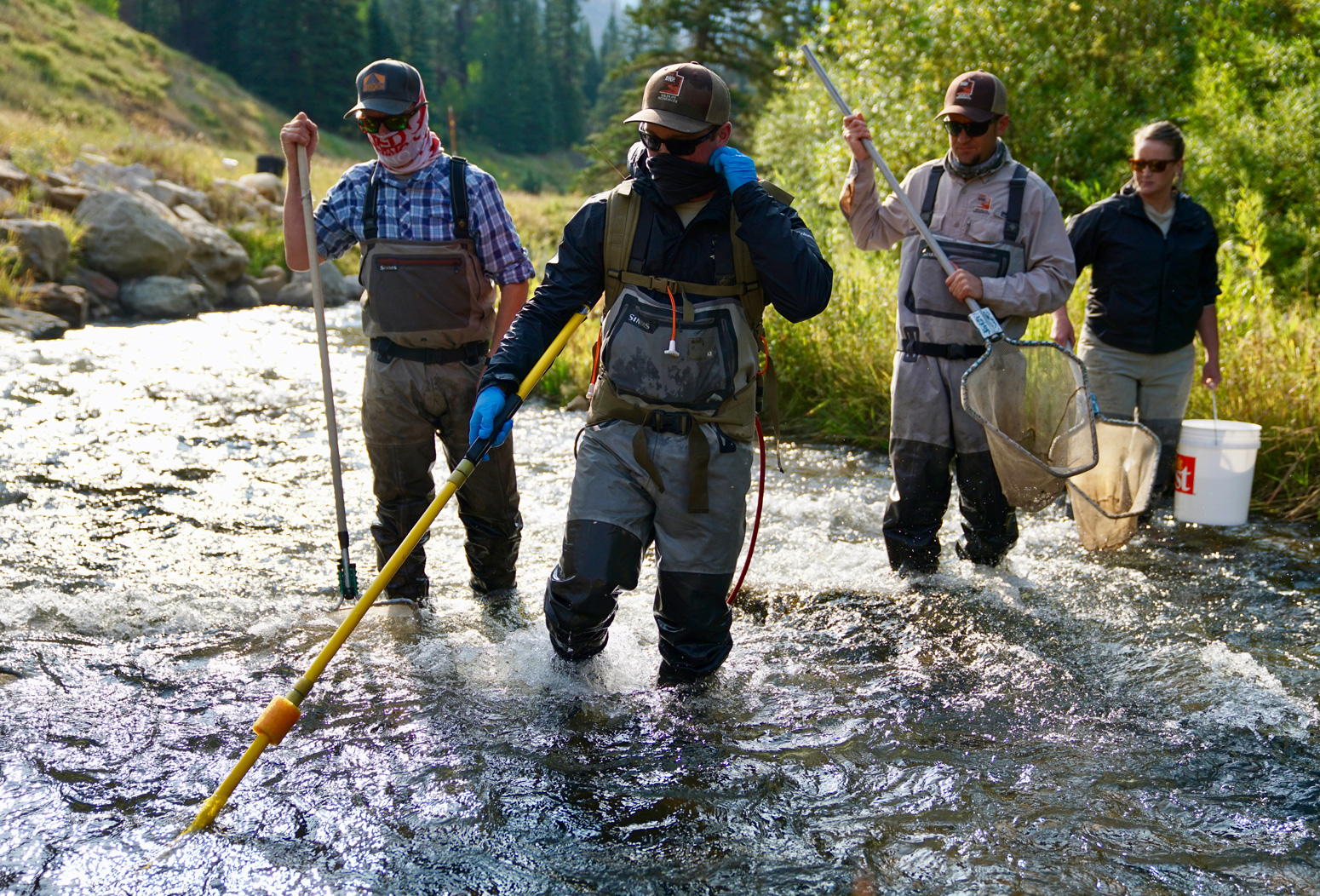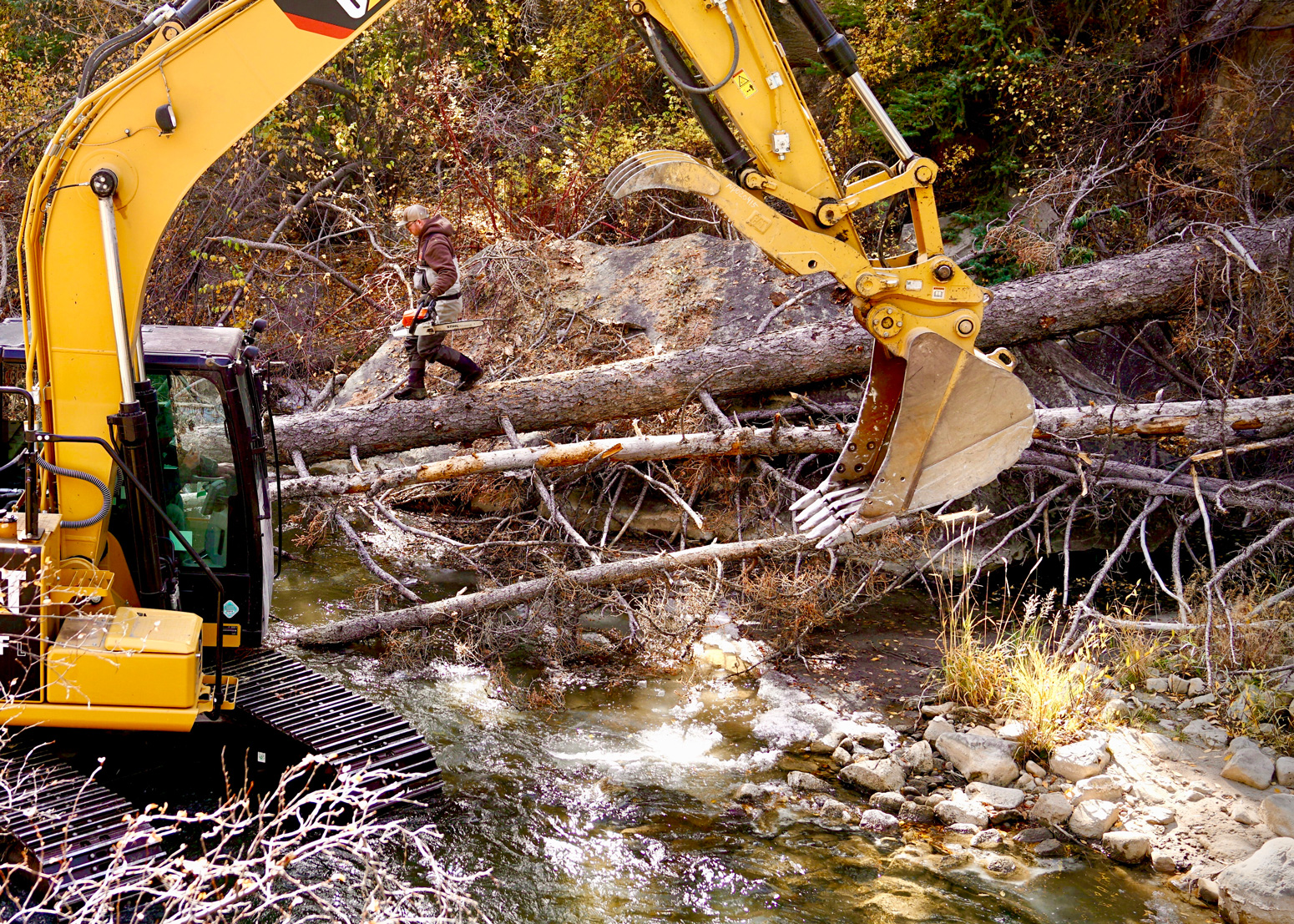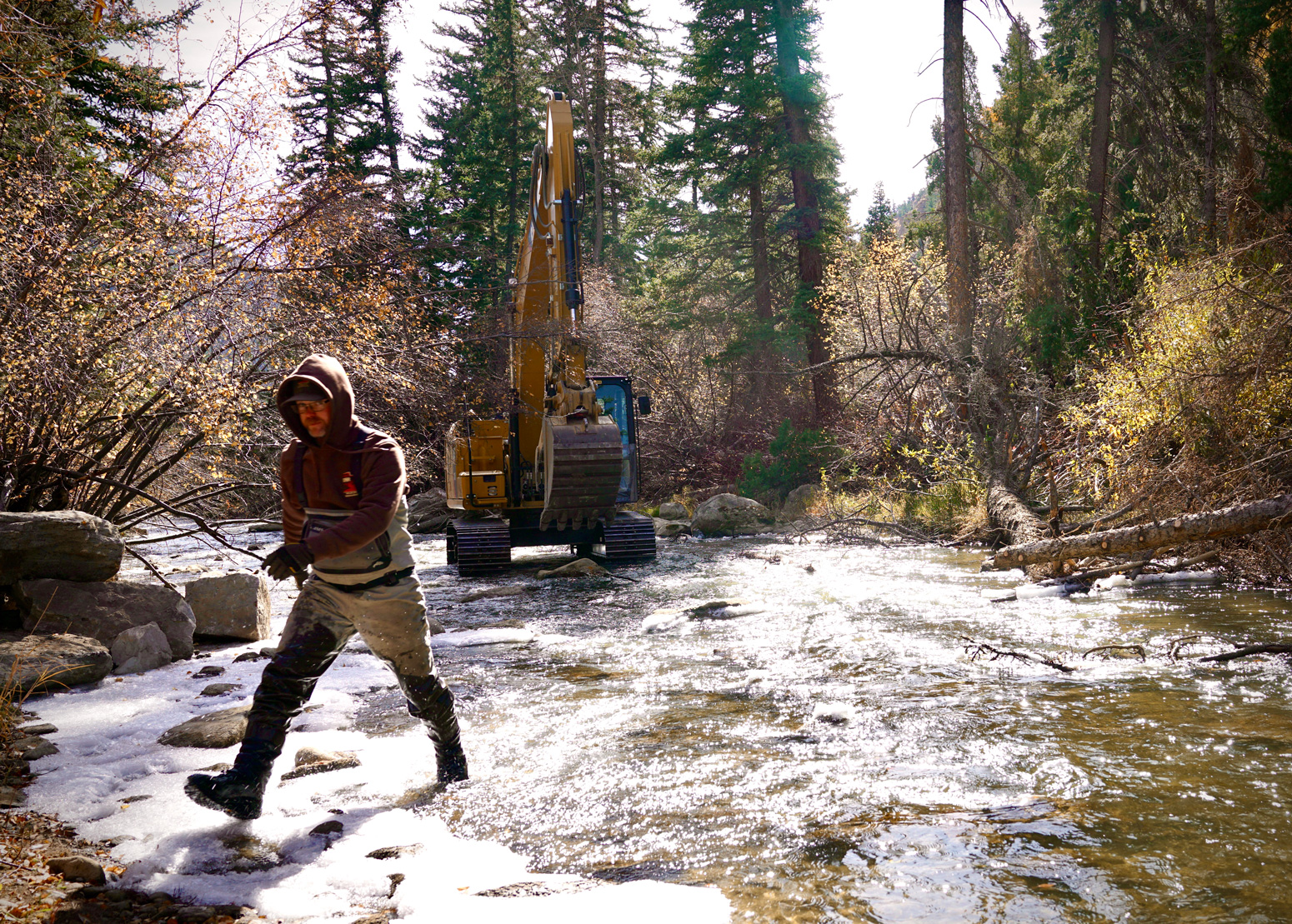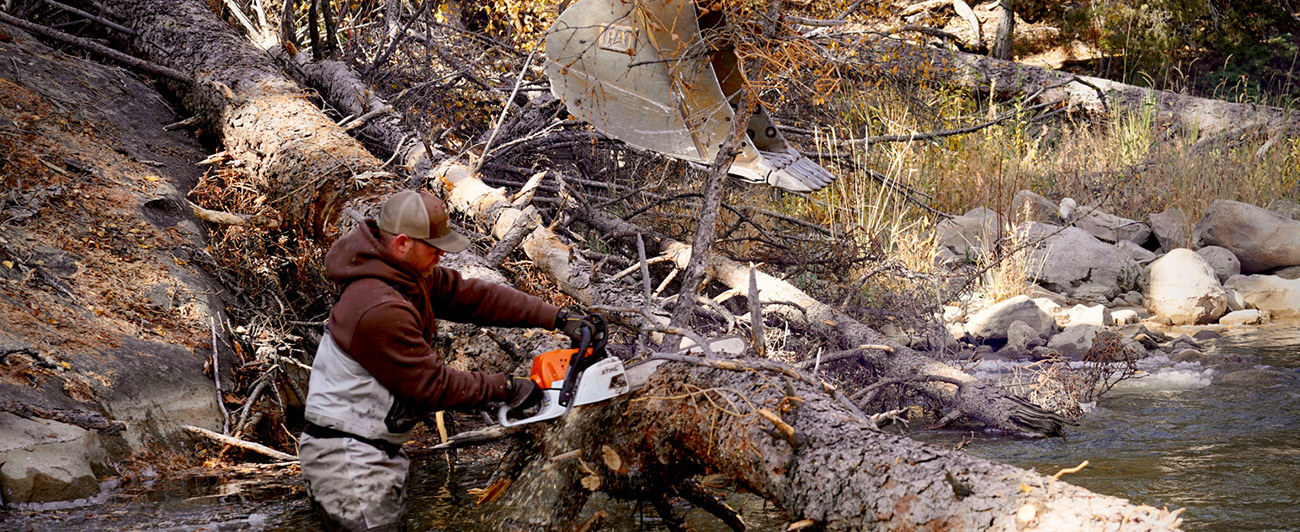Conservation
After the Fire
Restoring Utah’s Huntington Creek
A wildfire sweeps through a canyon, burning all the vegetation in its path. No plant life means no insects, and no insects means no food source for the fish in the creek below.
Then comes rain and snow that, unhindered by the erosion protection the plant life once provided, choke the stream with runoff full of ash, sediment, and debris. A once vibrant fish population is decimated, with no natural path to resuscitation.
With a greater abundance of wildfires each year, this scene is an increasingly common one, though work is being done to revitalize some of these populations and habitat. With effort and, perhaps more importantly, time, these destroyed fisheries can be brought back.
“Humans want immediate results,” says Aaron Bott, Conservation Outreach Manager for the Utah Division of Wildlife Resources, who is hard at work on a restoration project in Central Utah’s Huntington Canyon. “As a species, we’d like to see faster results, because our time on this Earth is so finite. That being said, this will take a long time. It will take decades to come full-circle, to get those mature trees back in the area again. But we are actually surprised at how fast we are seeing a repopulation of fish.”

ABOVE As part of the restoration project, employees of the Utah Division of Wildlife Resources conduct annual fish inventories using electrofishing techniques. They’ve been pleased with the growth they’ve witnessed in the trout of Huntington Creek.
This particular project began after the 2012 Seeley Fire burned over 47,000 acres. After the fire, heavy rain led to flash flooding and landslides, resulting in a total loss of fish in the lower section of Huntington Creek.
Like many similar projects across the West, the Huntington Creek restoration effort is a collaboration between several interested groups and agencies, including the Utah DWR, The US Forest Service, Trout Unlimited, and the energy company, PacifiCorp, that operates a dam at the top of Huntington Canyon.
A restoration project like this one involves a three-pronged approach—reinforcing riverbanks and transplanting vegetation to prevent further erosion, creating pools and fish-holding cover, and systematically stocking fish to jumpstart repopulation. Using heavy equipment, workers reinforce stream banks and dig pools and channels in the creek bed, which they then reinforce with boulders.
“There’s a science to this flow structure method,” Bott says, “but we are basically trying to create natural-looking, and what would be natural in a healthy riparian area, diversions along the river so that fish have places of refuge where they can flourish. It’s a very steep canyon, so we’re also trying to retain as much structure along the stream banks as we possibly can. It not only benefits the fish, but it benefits all the other species that are dependent on those riparian zones. The more willows we can get back, the more vegetation, the more trees we can get holding the soil, wildlife and fish will benefit, and it also is beneficial for the public.”

ABOVE Using heavy equipment, workers create channels and pools, and reinforce them with boulders, to create a healthy riparian flow structure full of cover for the browns and cutthroats that will once again populate this creek.
In addition to the manual work of restoring the riparian landscape, the DWR has been stocking Huntington Creek with brown and cutthroat trout. For several years now, they’ve been conducting annual fish inventories using electroshock methods. In time, what was once a Blue Ribbon Fishery will be Blue Ribbon again.
“Discussions are already being had about how soon or how quickly we’ll be able to designate this as a Blue Ribbon Fishery,” Bott says. “It’s been eight years since the fire, and we’re seeing a dramatic increase in the amount of brown trout as well as the size and the robustness of the fish in this area, which is really exciting.”
Bott stressed that it’s not just the fish populations that the DWR is working to benefit, but also the people who recreate in these meaningful areas, and the ecosystems as a whole, including other wildlife that utilize the area directly or indirectly. The goal is to make the landscape as close to natural as possible had the fire never occurred.

ABOVE Humans start the process of revitalizing a river ecosystem destroyed by wildfire, but the most important ingredient in the process is time.
He credits the collaboration of agencies at both state and federal levels, as well as nonprofit organizations, and companies in the private sector, for success in restoration efforts like this one.
“Partnerships make the projects possible,” he says. “This stream is in a multiple use area on National Forest land, so a lot of different people enjoy and utilize this region. The Utah DWR is responsible for managing wildlife and fish in the state, so obviously we get involved, but we couldn’t do it without the support of non-government organizations like Trout Unlimited. Their willingness to help fund the project as well as do hands-on work at the site is so beneficial to us.”
It takes plenty of work, and a lot of patience, but in seeing the charred remains of a once lively river ecosystem, at the very least there is hope.
